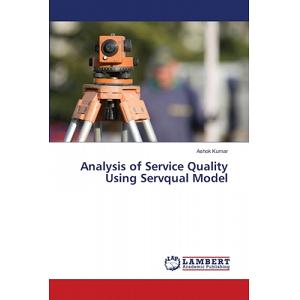Gap 1: Customers’ expectations versus management perceptions – not knowing what customers expect because of:
1. The lack of marketing research orientation.
When management or empowered employees do not acquire accurate information about customer expectations, provider gap 1 is large. Formal and informal methods to capture information about customer expectations must be developed through market research. Techniques involving a variety of traditional research approaches must be used to stay close to the customers, among them customer visits survey research, complaint systems, and customer panels. More innovative techniques – such as Quality Function Deployment (QFD), structured brainstorming, and service quality gap analysis are often needed.
2. Inadequate upward communication.
If management is not in contact with front – line employees and does not understand what they know, the gap widens.
3. Insufficient relationship focus.
The lack of company strategies to retain customers and strengthen relationship with them, an approach called relationship marketing.
4. Inadequate service recovery.
It is critical for an organization to understand the importance of service recovery – why people complain, what they expect when they complain, and how to develop effective service recovery strategies for dealing with inevitable service failures. This might involve a well – defined complaint – handling procedure and empowering employees to react on the spot, in real time to fix the failure; other times it involves a – service guarantee or ways to compensate the customer for the unfulfilled promise.
Gap 2: Management perceptions versus service specifications – Not selecting the right service designs and standards because of inadequate commitment to service quality, a perception of unfeasibility, inadequate task standardisation and an absence of goal setting.
Gap 3: Service specifications versus service delivery – not delivering to service standards because of role ambiguity and conflict, poor employee-job fit and poor technology-job fit, inappropriate supervisory control systems, lack of perceived control and lack of teamwork.
Gap 4: Service delivery versus external communication – not matching performance to promises because of inadequate horizontal communications and propensity to over-promise.
Gap 5: The discrepancy between customer expectations and their perceptions of the service delivered: because of the influences exerted from the customer side and the gaps on the part of the service provider. In this case, customer expectations are influenced by the extent of personal needs, word of mouth recommendation and past service experiences.
The central focus of the gaps model is the customer gap, the difference between customer expectations and perceptions. Firms need to close this gap-between what customers expect and receive in order to satisfy their customers and build long term relationships with them. To close this all-important customer gap, the model suggests that four other gaps - the provider gaps-need to be closed.
The SERVQUAL instrument was specifically designed to measure service quality using both the gap concept and service quality dimensions (Parasuraman et al., 1985, 1988). The gap concept has clear implications for the measurement of service quality, implying that both perceptions and expectations need to be explicitly measured along the quality dimensions in order to quantify service quality gaps (Accounts Commission for Scotland, 1999a; Lam, 1997; Parasuraman et al., 1985, 1988). However, comparing service expectations with service perceptions has offered a more insightful perspective. Perceptions of quality by those who provide services and those who consume them have often been reported to differ (Parasuraman et al., 1985).
Parasuraman et al. (1985) developed a service quality model based on gap analysis. The result of gap analysis is used to improve service quality. The figure above shows the "GAP" model of service quality from Parasuraman et al. (Zithaml & Bitner 1996). This model offers an integrated view of the consumer – provider relationship. In this case expected service is a function of word of mouth communication, personal need and past experience, and perceived service is a product of service delivery and external communications to consumers. Ghobadian et al. (1994) argued that expectations can be shaped through marketing and external communication. Customers will become more aware of what services and service levels can be achieved within the restraints of available resource.
References:
(http://www.rocw.raifoundation.org/management/bba/ MarketingofServices/lecture-notes/lecture-29.pdf).
Parasuraman, A., Zeithaml, V.A. and Berry, L.L (1985), “Conceptual Model of Service Quality and Its Implication for Future Research,” Journal of Marketing, 49 (4), 41 – 50.
Parasuraman, A., Zeithaml, V., Berry, L.L. (1988), "SERVQUAL: a multiple-item scale for measuring consumer perceptions of quality", Journal of Retailing, 64 (1), 12-40.
This photo is perfect for visualizing the difference between appearance and reality, which is exactly what the Gap Model in service quality reveals.
Zooming into the fine details reveals something important: even when things look beautiful on the surface, they can still feel artificial. In service quality, this is the gap between expectations and experience.
This image metaphorically illustrates Gap — the customer’s perception versus their expectation.
Quranic Insight:
“Woe to those that give less [than due]. Who, when they take a measure from people, take in full. But if they give by measure or weight to them, they cause loss.”
(QS Al-Mutaffifin 83:1–3)
This ayah highlights dishonesty in exchange — a key element in service failure when delivery doesn’t match the promise.
(QS Al-Mutaffifin 83:1–3)
This ayah highlights dishonesty in exchange — a key element in service failure when delivery doesn’t match the promise.
This photo — a close-up of synthetic pine needles dusted with artificial snow and surrounded by red and white sparkles — has a strong metaphoric feel. It gives a zoomed-in view of something artificial yet designed to imitate nature, suggesting themes of illusion, structure, complexity, or layered design.



No comments:
Post a Comment